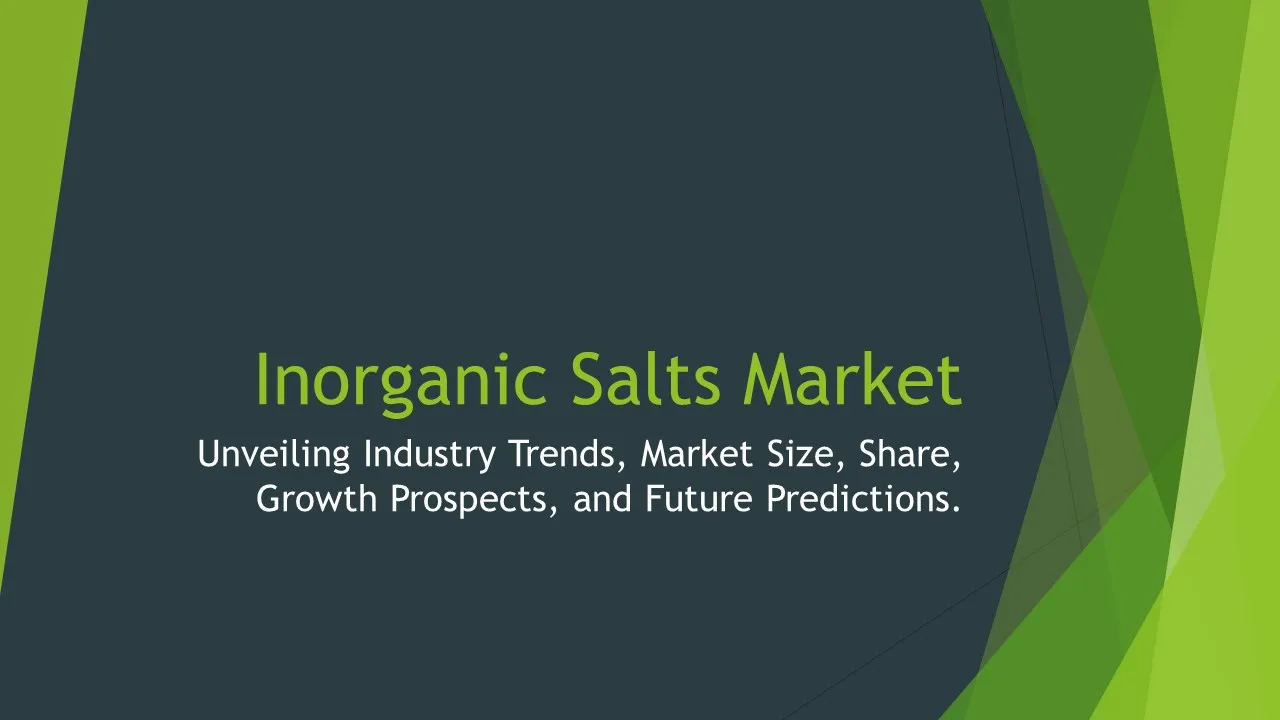Secondary Alcohol Ethoxylate
Secondary Alcohol Ethoxylate Market Segments - by Product Type (Lauryl Alcohol Ethoxylate, Cetyl Alcohol Ethoxylate, Stearyl Alcohol Ethoxylate, Behenyl Alcohol Ethoxylate, Oleyl Alcohol Ethoxylate), Application (Detergents, Personal Care, Textile, Agrochemicals, and Others), Distribution Channel (Direct Sales, Indirect Sales), Ingredient Type (Palm, Soy, Tallow, Rapeseed, and Others), and Region (North America, Europe, Asia Pacific, Latin America, Middle East & Africa) - Global Industry Analysis, Growth, Share, Size, Trends, and Forecast
- Report Preview
- Table Of Content
- Segments
- Methodology
Secondary Alcohol Ethoxylate Market Outlook
The global Secondary Alcohol Ethoxylate market, valued at approximately USD 1.5 billion in 2023, is projected to experience substantial growth, with a compound annual growth rate (CAGR) of around 5.2% from 2023 to 2030. This robust growth can be attributed to an increasing demand for surfactants and emulsifiers across various industries, including personal care, textiles, and agrochemicals. As consumer awareness regarding sustainable and biodegradable products rises, manufacturers are increasingly focused on developing eco-friendly alcohol ethoxylates that meet regulatory standards and consumer preferences. Moreover, the versatility of secondary alcohol ethoxylates in serving multiple functions, such as wetting agents, emulsifiers, and detergents, further fuels their demand in diverse applications. The ongoing expansion of the end-user industries, particularly in emerging markets, is expected to drive significant market growth over the forecast period.
Growth Factor of the Market
One of the primary growth factors for the Secondary Alcohol Ethoxylate market is the rising demand for biodegradable and environmentally friendly surfactants. As the global focus shifts towards sustainability, manufacturers are investing in research and development to produce ethoxylates that minimize environmental impact. Additionally, the increasing application of these compounds in personal care products, especially in formulations requiring gentle cleansing agents, contributes to market expansion. The textile industry’s growth, with an emphasis on eco-friendly manufacturing processes, also enhances the demand for secondary alcohol ethoxylates as effective wetting and emulsifying agents. Furthermore, the agrochemical sector's adoption of these surfactants in pesticide formulations and fertilizers is expected to bolster market growth, driven by the need for improved agricultural productivity. The expanding population and subsequent rise in consumer goods consumption will continue to favorably impact the market as well.
Key Highlights of the Market
- The market is expected to reach USD 1.5 billion by 2030, growing at a CAGR of 5.2%.
- Increased demand for eco-friendly products is driving growth in the surfactants market.
- Significant applications in personal care, textiles, and agrochemicals are expanding market reach.
- Research and development efforts are focused on developing biodegradable alternatives.
- The growing population and rising consumer goods consumption are contributing to increased demand.
By Product Type
Lauryl Alcohol Ethoxylate:
Lauryl Alcohol Ethoxylate is one of the most widely used surfactants in the secondary alcohol ethoxylate market due to its excellent emulsifying and wetting properties. This type of alcohol ethoxylate is commonly incorporated into formulations for personal care products, household cleaners, and industrial applications. Its ability to enhance the solubility of oils and other hydrophobic substances makes it an essential ingredient in shampoos and skin care products, where mildness and foaming are critical. Additionally, Lauryl Alcohol Ethoxylate is also used in agricultural products, serving as a surfactant to improve the efficiency of pesticide applications. The versatility of this product type and its compatibility with other ingredients continue to drive its demand across various sectors.
Cetyl Alcohol Ethoxylate:
Cetyl Alcohol Ethoxylate is another significant product type in the secondary alcohol ethoxylate market, known for its emulsifying properties and compatibility with a wide range of formulations. It is predominantly utilized in personal care products such as lotions, creams, and hair conditioners, where it provides a smooth texture and improves the overall aesthetic appeal of the product. Beyond personal care, Cetyl Alcohol Ethoxylate is increasingly being adopted in industrial applications, including metalworking fluids and lubricants, due to its ability to enhance surface wetting and reduce friction. The growing trend towards multifunctional ingredients in formulations supports the demand for Cetyl Alcohol Ethoxylate across diverse applications.
Stearyl Alcohol Ethoxylate:
Stearyl Alcohol Ethoxylate is distinguished for its rich emollient properties, making it an ideal choice for formulations intended for skin and hair care. This product type offers enhanced moisturizing effects, which is crucial for personal care products like creams and lotions that aim to provide hydration and nourishment to the skin. Additionally, Stearyl Alcohol Ethoxylate's application extends to the textile industry, where it acts as a lubricant and softener for fabric treatment processes. As consumer preferences shift towards products that integrate skin-friendly ingredients, the demand for Stearyl Alcohol Ethoxylate is anticipated to grow significantly in the upcoming years, driven by its functional benefits.
Behenyl Alcohol Ethoxylate:
Behenyl Alcohol Ethoxylate is less common but gaining traction in the market due to its unique fatty alcohol structure, which lends itself well to emulsifying and stabilizing emulsions in various formulations. Its application is particularly prominent in high-end cosmetic products that prioritize performance and quality. Moreover, Behenyl Alcohol Ethoxylate has shown effectiveness in agrochemical formulations, enhancing the efficacy of pesticide dispersions. As the demand for premium and specialized products rises, this product type is expected to carve out a more significant share in the secondary alcohol ethoxylate market.
Oleyl Alcohol Ethoxylate:
Oleyl Alcohol Ethoxylate is recognized for its excellent surfactant properties, making it a popular choice for various applications that require high performance and mildness. In personal care formulations, Oleyl Alcohol Ethoxylate is frequently used in cleansers and moisturizers, as it provides a smooth feel and enhances product stability. Its effectiveness as a wetting agent also finds application in the agricultural sector, particularly in the formulation of herbicides and fungicides, helping to improve absorption and coverage. The growing focus on product efficacy and safety is anticipated to bolster the demand for Oleyl Alcohol Ethoxylate, reinforcing its position in the market.
By Application
Detergents:
The detergents segment holds a significant share in the secondary alcohol ethoxylate market, primarily due to the compound's ability to enhance the cleaning efficacy of various formulations. Secondary alcohol ethoxylates act as surfactants that effectively lower the surface tension of water, allowing for better dirt and grease removal from surfaces. Their versatility enables their use in laundry detergents, dishwashing liquids, and multi-surface cleaners. As consumers increasingly seek high-performance cleaning products that also offer eco-friendly attributes, the demand for secondary alcohol ethoxylates in detergents is projected to continue its upward trajectory.
Personal Care:
The personal care sector is another prominent application area for secondary alcohol ethoxylates, where they are incorporated into products such as shampoos, conditioners, creams, and lotions. Their mildness and ability to provide desired texture and performance make them essential ingredients in cosmetic formulations. As the beauty and personal care industry evolves, consumers are increasingly gravitating towards products that are not only effective but also contain sustainable and biodegradable ingredients. This trend is expected to drive the demand for secondary alcohol ethoxylates across various product lines in the personal care segment, presenting lucrative opportunities for manufacturers.
Textile:
In the textile industry, secondary alcohol ethoxylates play a crucial role in various processes, including dyeing, finishing, and fabric treatment. Their excellent wetting properties enable better dye penetration and uniformity, which are vital for achieving high-quality textile products. Additionally, these compounds are used as emulsifiers and lubricants in textile formulation processes, enhancing the efficiency of manufacturing operations. As the textile industry continues to evolve with a focus on sustainability, the demand for eco-friendly and functional ingredients, such as secondary alcohol ethoxylates, is expected to grow significantly, particularly in regions with stringent environmental regulations.
Agrochemicals:
Secondary alcohol ethoxylates are increasingly being utilized in the agrochemical sector, primarily in pesticide and herbicide formulations. Their surfactant properties enhance the dispersion and effectiveness of chemical agents, ensuring better coverage and adherence to plant surfaces. The growing global population and the need for increased agricultural productivity are driving the demand for effective agrochemical solutions, further supporting the need for secondary alcohol ethoxylates in this application. As sustainability becomes a focal point for agricultural practices, the adoption of biodegradable surfactants is anticipated to rise, favoring the growth of this segment in the market.
Others:
The 'Others' category encompasses various applications of secondary alcohol ethoxylates in industries such as food processing, pharmaceuticals, and oil and gas. In food processing, these compounds are used as emulsifiers and stabilizers, enhancing product quality and shelf-life. In pharmaceuticals, secondary alcohol ethoxylates serve as excipients, aiding in drug formulation and delivery. Moreover, in the oil and gas industry, they are utilized as surfactants in drilling fluids and enhanced oil recovery processes. As industries evolve and innovate, the demand for multifunctional ingredients like secondary alcohol ethoxylates is projected to grow, creating new opportunities across diverse application areas.
By Distribution Channel
Direct Sales:
Direct sales strategies in the secondary alcohol ethoxylate market allow manufacturers to engage with customers more effectively, providing tailored solutions and fostering long-term relationships. This approach enables manufacturers to maintain greater control over pricing, product quality, and customer service. Direct sales channels are often preferred by large enterprises seeking bulk purchases, as they can facilitate customized product specifications and quicker delivery timelines. Furthermore, as companies increasingly emphasize personalized service and support, the trend towards direct sales is expected to bolster market reach and customer satisfaction in the secondary alcohol ethoxylate sector.
Indirect Sales:
Indirect sales channels, including distributors, wholesalers, and retailers, play a vital role in enhancing the accessibility and availability of secondary alcohol ethoxylates in the market. These intermediaries expand the reach of manufacturers, allowing products to penetrate various regions effectively. Through indirect sales, manufacturers can tap into established networks and customer bases, making it easier to introduce new products and reach smaller enterprises. The reliance on indirect sales is expected to continue, particularly as the demand for secondary alcohol ethoxylates grows in emerging markets, where distribution networks can significantly influence market dynamics.
By Ingredient Type
Palm:
Palm-derived secondary alcohol ethoxylates are widely utilized in the market due to their cost-effectiveness and biodegradability. This ingredient type is particularly favored in personal care and household cleaning products, where consumers are increasingly seeking eco-friendly formulations. The versatility of palm-based alcohol ethoxylates, combined with their excellent emulsifying and surfactant properties, makes them a preferred choice for manufacturers across various applications. However, the sustainability concerns associated with palm oil production have led to an increased focus on sourcing certified sustainable palm products, which is shaping the landscape of this ingredient type in the market.
Soy:
Soy-based secondary alcohol ethoxylates are gaining popularity as consumers become more conscious of the environmental impact of their purchases. Derived from renewable resources, soy-based ethoxylates offer a sustainable alternative to petroleum-derived surfactants, making them increasingly attractive to manufacturers in personal care and detergent formulations. The demand for soy-derived ingredients is also driven by regulatory changes favoring plant-based options in formulations. As the market continues to shift towards greener choices, the soy ingredient type is expected to see significant growth within the secondary alcohol ethoxylate sector.
Tallow:
Tallow-derived secondary alcohol ethoxylates are commonly used in both industrial and consumer products due to their excellent emulsifying properties. Their application spans various industries, including detergents, personal care, and agrochemicals. Tallow's fat content allows for the creation of high-quality ethoxylates that perform effectively in diverse formulations. However, the sourcing of tallow products raises ethical and sustainability concerns among consumers. As awareness around animal welfare and environmental impact increases, manufacturers may need to adapt strategies for sourcing tallow derivatives responsibly to maintain competitiveness in the market.
Rapeseed:
Rapeseed-based secondary alcohol ethoxylates are emerging as a favorable option in the market, particularly due to their low environmental impact and biodegradability. This ingredient type is characterized by its versatility, making it suitable for a wide range of applications, including personal care, detergents, and industrial formulations. The growth of rapeseed-derived ethoxylates is supported by the increasing use of canola oil in sustainable product formulations, attracting environmentally conscious consumers. As the market for bio-based and renewable surfactants expands, the demand for rapeseed-derived secondary alcohol ethoxylates is expected to continue rising.
Others:
The 'Others' category encompasses various ingredient types used in the production of secondary alcohol ethoxylates, including coconut oil and various synthetic sources. Coconut oil-derived ethoxylates are recognized for their mildness and effectiveness in personal care applications, providing a natural alternative to traditional surfactants. Additionally, synthetic sources allow for the creation of tailored surfactants that meet specific performance criteria in industrial applications. The diversity within this category underscores the trend toward innovation in synthesizing surfactants that cater to various consumer preferences while addressing sustainability concerns in the market.
By Region
The regional analysis of the Secondary Alcohol Ethoxylate market reveals that North America and Europe are currently leading in terms of market share, attributed to the well-established presence of the personal care, detergent, and textile industries. In North America, the market size is projected to exceed USD 600 million by 2030, growing at a CAGR of 4.8%, driven by the increasing demand for eco-friendly and biodegradable surfactants. The regulatory environment in both North America and Europe is also increasingly supportive of sustainable practices, further propelling market growth. The focus on sustainability and innovation is expected to stimulate product development in these regions, leading to a favorable outlook for secondary alcohol ethoxylates.
Asia Pacific is anticipated to witness the fastest growth rate in the coming years, owing to rapid industrialization and the expansion of end-user industries, such as personal care and agrochemicals. The region's market is projected to grow at a CAGR of 6.5%, reaching approximately USD 500 million by 2030. This growth is supported by increasing disposable income, changing consumer preferences towards quality personal care products, and a rising emphasis on agricultural productivity. As emerging economies in Asia Pacific continue to develop, the demand for secondary alcohol ethoxylates is expected to surge, creating substantial opportunities for manufacturers.
Opportunities
The Secondary Alcohol Ethoxylate market is poised for several opportunities driven by evolving consumer preferences and regulatory requirements. With a growing emphasis on sustainability, manufacturers have the chance to innovate and develop new formulations that utilize biodegradable and environmentally friendly surfactants. This shift allows companies to position themselves favorably in the market as consumers increasingly seek products that align with their values. Furthermore, there is potential for growth in the agrochemical and textile industries, where the demand for effective and sustainable solutions presents a lucrative opportunity for secondary alcohol ethoxylates. As more companies adopt eco-conscious practices, the demand for these surfactants is projected to rise, allowing manufacturers to expand their product offerings and cater to diverse application needs.
Moreover, research and development efforts aimed at enhancing the performance and functionality of secondary alcohol ethoxylates will continue creating opportunities for market players. Innovations in formulation techniques, coupled with the introduction of new ingredient types, can lead to products that meet specific consumer and industry requirements, such as improved solubility, enhanced emulsification, and greater stability in formulations. Additionally, as the market for personal care products continues to expand globally, manufacturers can leverage these trends to capitalize on the increasing demand for high-quality, sustainable surfactants across various applications, reinforcing their market position for long-term success.
Threats
Despite the promising growth trajectory of the Secondary Alcohol Ethoxylate market, several threats could pose challenges to manufacturers and industry players. One significant threat is the increasing scrutiny of chemical ingredients by regulatory bodies and consumers alike, leading to stringent regulations governing surfactants and their environmental impact. As governments implement stricter regulatory frameworks to promote sustainability, companies may face compliance challenges, particularly if their formulations do not meet evolving standards. This regulatory environment may necessitate significant investments in research and development to ensure product safety and efficacy, potentially impacting profitability and operational efficiency.
Additionally, the competitive landscape within the surfactants market is intensifying as new players enter the sector and existing manufacturers expand their product offerings. This heightened competition may lead to price wars, further squeezing profit margins and forcing companies to innovate continuously to maintain market share. Moreover, fluctuations in raw material prices, particularly for bio-based ingredients, could pose risks to cost structures, affecting pricing strategies and overall market dynamics. As industry players navigate these challenges, adaptability and proactive strategies will be crucial in sustaining growth in the Secondary Alcohol Ethoxylate market.
Competitor Outlook
- BASF SE
- SABIC
- Huntsman Corporation
- Clariant AG
- Solvay S.A.
- Evonik Industries AG
- Dow Chemical Company
- Kraton Corporation
- AkzoNobel N.V.
- Chemours Company
- Stepan Company
- Oxiteno S.A.
- Eastman Chemical Company
- Galaxy Surfactants
- Societe des Produits Chimiques de Madagascar (SPCM)
The overall competitive landscape of the Secondary Alcohol Ethoxylate market is characterized by a mix of established players and emerging companies striving to capture market share. Key manufacturers are actively engaged in research and development to create innovative solutions that cater to the growing demand for sustainable and effective surfactants in various applications. Strategic partnerships and collaborations are also becoming increasingly common as companies aim to leverage each other's strengths and technological capabilities. As consumer preferences shift towards high-performance and eco-friendly products, companies that can adapt and meet these changing demands are likely to gain a competitive edge in the market.
Among the notable players, BASF SE stands out with its extensive portfolio of surfactants and commitment to sustainability. The company has developed various biodegradable surfactants, positioning itself as a leader in producing environmentally friendly products. Similarly, Evonik Industries AG has invested heavily in creating specialized surfactants that cater to niche markets, enhancing its competitiveness in the secondary alcohol ethoxylate segment. The focus on innovation and sustainable practices is crucial for these companies, as they navigate the ever-evolving market landscape and address the challenges posed by regulatory constraints.
Another major player in the market, Huntsman Corporation, has a diverse product range that includes various alcohol ethoxylates tailored for specific applications. The company's commitment to sustainability and its focus on developing high-performance surfactants have allowed it to maintain a strong market presence. Additionally, AkzoNobel N.V., known for its expertise in specialty chemicals, continues to invest in research to develop effective and eco-friendly surfactants that meet the needs of diverse industries. The ongoing efforts of these companies to push the boundaries of innovation will be critical as they look to solidify their positions in the growing Secondary Alcohol Ethoxylate market.
1 Appendix
- 1.1 List of Tables
- 1.2 List of Figures
2 Introduction
- 2.1 Market Definition
- 2.2 Scope of the Report
- 2.3 Study Assumptions
- 2.4 Base Currency & Forecast Periods
3 Market Dynamics
- 3.1 Market Growth Factors
- 3.2 Economic & Global Events
- 3.3 Innovation Trends
- 3.4 Supply Chain Analysis
4 Consumer Behavior
- 4.1 Market Trends
- 4.2 Pricing Analysis
- 4.3 Buyer Insights
5 Key Player Profiles
- 5.1 SABIC
- 5.1.1 Business Overview
- 5.1.2 Products & Services
- 5.1.3 Financials
- 5.1.4 Recent Developments
- 5.1.5 SWOT Analysis
- 5.2 BASF SE
- 5.2.1 Business Overview
- 5.2.2 Products & Services
- 5.2.3 Financials
- 5.2.4 Recent Developments
- 5.2.5 SWOT Analysis
- 5.3 Clariant AG
- 5.3.1 Business Overview
- 5.3.2 Products & Services
- 5.3.3 Financials
- 5.3.4 Recent Developments
- 5.3.5 SWOT Analysis
- 5.4 Solvay S.A.
- 5.4.1 Business Overview
- 5.4.2 Products & Services
- 5.4.3 Financials
- 5.4.4 Recent Developments
- 5.4.5 SWOT Analysis
- 5.5 Oxiteno S.A.
- 5.5.1 Business Overview
- 5.5.2 Products & Services
- 5.5.3 Financials
- 5.5.4 Recent Developments
- 5.5.5 SWOT Analysis
- 5.6 AkzoNobel N.V.
- 5.6.1 Business Overview
- 5.6.2 Products & Services
- 5.6.3 Financials
- 5.6.4 Recent Developments
- 5.6.5 SWOT Analysis
- 5.7 Stepan Company
- 5.7.1 Business Overview
- 5.7.2 Products & Services
- 5.7.3 Financials
- 5.7.4 Recent Developments
- 5.7.5 SWOT Analysis
- 5.8 Chemours Company
- 5.8.1 Business Overview
- 5.8.2 Products & Services
- 5.8.3 Financials
- 5.8.4 Recent Developments
- 5.8.5 SWOT Analysis
- 5.9 Galaxy Surfactants
- 5.9.1 Business Overview
- 5.9.2 Products & Services
- 5.9.3 Financials
- 5.9.4 Recent Developments
- 5.9.5 SWOT Analysis
- 5.10 Kraton Corporation
- 5.10.1 Business Overview
- 5.10.2 Products & Services
- 5.10.3 Financials
- 5.10.4 Recent Developments
- 5.10.5 SWOT Analysis
- 5.11 Dow Chemical Company
- 5.11.1 Business Overview
- 5.11.2 Products & Services
- 5.11.3 Financials
- 5.11.4 Recent Developments
- 5.11.5 SWOT Analysis
- 5.12 Evonik Industries AG
- 5.12.1 Business Overview
- 5.12.2 Products & Services
- 5.12.3 Financials
- 5.12.4 Recent Developments
- 5.12.5 SWOT Analysis
- 5.13 Huntsman Corporation
- 5.13.1 Business Overview
- 5.13.2 Products & Services
- 5.13.3 Financials
- 5.13.4 Recent Developments
- 5.13.5 SWOT Analysis
- 5.14 Eastman Chemical Company
- 5.14.1 Business Overview
- 5.14.2 Products & Services
- 5.14.3 Financials
- 5.14.4 Recent Developments
- 5.14.5 SWOT Analysis
- 5.15 Societe des Produits Chimiques de Madagascar (SPCM)
- 5.15.1 Business Overview
- 5.15.2 Products & Services
- 5.15.3 Financials
- 5.15.4 Recent Developments
- 5.15.5 SWOT Analysis
- 5.1 SABIC
6 Market Segmentation
- 6.1 Secondary Alcohol Ethoxylate Market, By Application
- 6.1.1 Detergents
- 6.1.2 Personal Care
- 6.1.3 Textile
- 6.1.4 Agrochemicals
- 6.1.5 Others
- 6.2 Secondary Alcohol Ethoxylate Market, By Product Type
- 6.2.1 Lauryl Alcohol Ethoxylate
- 6.2.2 Cetyl Alcohol Ethoxylate
- 6.2.3 Stearyl Alcohol Ethoxylate
- 6.2.4 Behenyl Alcohol Ethoxylate
- 6.2.5 Oleyl Alcohol Ethoxylate
- 6.3 Secondary Alcohol Ethoxylate Market, By Ingredient Type
- 6.3.1 Palm
- 6.3.2 Soy
- 6.3.3 Tallow
- 6.3.4 Rapeseed
- 6.3.5 Others
- 6.4 Secondary Alcohol Ethoxylate Market, By Distribution Channel
- 6.4.1 Direct Sales
- 6.4.2 Indirect Sales
- 6.1 Secondary Alcohol Ethoxylate Market, By Application
7 Competitive Analysis
- 7.1 Key Player Comparison
- 7.2 Market Share Analysis
- 7.3 Investment Trends
- 7.4 SWOT Analysis
8 Research Methodology
- 8.1 Analysis Design
- 8.2 Research Phases
- 8.3 Study Timeline
9 Future Market Outlook
- 9.1 Growth Forecast
- 9.2 Market Evolution
10 Geographical Overview
- 10.1 Europe - Market Analysis
- 10.1.1 By Country
- 10.1.1.1 UK
- 10.1.1.2 France
- 10.1.1.3 Germany
- 10.1.1.4 Spain
- 10.1.1.5 Italy
- 10.1.1 By Country
- 10.2 Asia Pacific - Market Analysis
- 10.2.1 By Country
- 10.2.1.1 India
- 10.2.1.2 China
- 10.2.1.3 Japan
- 10.2.1.4 South Korea
- 10.2.1 By Country
- 10.3 Latin America - Market Analysis
- 10.3.1 By Country
- 10.3.1.1 Brazil
- 10.3.1.2 Argentina
- 10.3.1.3 Mexico
- 10.3.1 By Country
- 10.4 North America - Market Analysis
- 10.4.1 By Country
- 10.4.1.1 USA
- 10.4.1.2 Canada
- 10.4.1 By Country
- 10.5 Middle East & Africa - Market Analysis
- 10.5.1 By Country
- 10.5.1.1 Middle East
- 10.5.1.2 Africa
- 10.5.1 By Country
- 10.6 Secondary Alcohol Ethoxylate Market by Region
- 10.1 Europe - Market Analysis
11 Global Economic Factors
- 11.1 Inflation Impact
- 11.2 Trade Policies
12 Technology & Innovation
- 12.1 Emerging Technologies
- 12.2 AI & Digital Trends
- 12.3 Patent Research
13 Investment & Market Growth
- 13.1 Funding Trends
- 13.2 Future Market Projections
14 Market Overview & Key Insights
- 14.1 Executive Summary
- 14.2 Key Trends
- 14.3 Market Challenges
- 14.4 Regulatory Landscape
Segments Analyzed in the Report
The global Secondary Alcohol Ethoxylate market is categorized based on
By Product Type
- Lauryl Alcohol Ethoxylate
- Cetyl Alcohol Ethoxylate
- Stearyl Alcohol Ethoxylate
- Behenyl Alcohol Ethoxylate
- Oleyl Alcohol Ethoxylate
By Application
- Detergents
- Personal Care
- Textile
- Agrochemicals
- Others
By Distribution Channel
- Direct Sales
- Indirect Sales
By Ingredient Type
- Palm
- Soy
- Tallow
- Rapeseed
- Others
By Region
- North America
- Europe
- Asia Pacific
- Latin America
- Middle East & Africa
Key Players
- BASF SE
- SABIC
- Huntsman Corporation
- Clariant AG
- Solvay S.A.
- Evonik Industries AG
- Dow Chemical Company
- Kraton Corporation
- AkzoNobel N.V.
- Chemours Company
- Stepan Company
- Oxiteno S.A.
- Eastman Chemical Company
- Galaxy Surfactants
- Societe des Produits Chimiques de Madagascar (SPCM)
- Publish Date : Jan 20 ,2025
- Report ID : CH-14023
- No. Of Pages : 100
- Format : |
- Ratings : 4.5 (110 Reviews)









